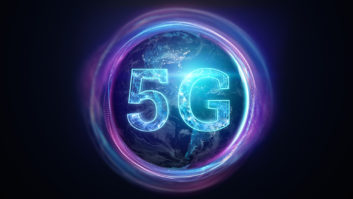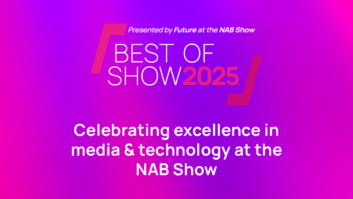As 5G is gradually introduced and supersedes 4G, the promise of increased bandwidth and lower latency becomes a reality for more organisations. In the video sector, telecom operators, content providers and broadcasters can expand their services, improve the experience for viewers and offer new products. Beyond improving the video and audio quality of content, 5G also enables a wider range of applications.
Bandwidth and the edge
A key aspect of the 5G opportunity is the increased bandwidth. With one gigabit per second streaming made possible, organisations are better able to provide 4K streams on top of existing HD streams, and even pave the way for 8K resolution, creating an enhanced viewer experience. The same applies to audio. Innovations such as MPEG-H and AC4 with Dolby Atmos rendering capabilities becoming possible, meaning support for multiple simultaneous channels and spatial sound effects, even on stereo sound systems.
But bandwidth is only the beginning. 5G also makes Multi-Access Edge Computing (MEC) possible. This is where storage and processing capabilities are pushed further down the network and used in smaller data centres or other infrastructure, and so are spread out closer to the viewers. MEC has a range of applications, including the ability for content providers to insert user-tailored content immediately before it reaches them, allowing for different content types to be distributed to varying users.
One obvious application of this is dynamic ad insertion (DAI), where advertisements are targeted to specific viewers, enhancing their value to advertisers and increasing monetisation opportunities. Harnessing the same technology, this method can also be applied to channels. Personalised channels can be created with content that suits the preferences of the end user, enhancing their value and opening up opportunities to provide a premium service.
Bringing future innovations into today
Innovations such as virtual reality (VR) and augmented reality (AR) have witnessed little traction in the industry so far, with the use of VR headsets still low and the high real-time processing requirements of AR proving to be a barrier. 5G could hold the answer by bringing about widespread adoption of this technology, as the subsequent increase in video quality is likely to encourage a greater number of users to invest in headsets.
In the world of AR, a prominent example is the localised infrastructure as part of an edge setup in a sports stadium. With the high bandwidth and low latency brought about by 5G, sports fans will be able to use their mobile devices to directly view different live camera angles, with AR capabilities allowing for real-time player statistics such as passes completed or goals scored in a soccer match. This will serve to enhance the live experience for fans attending events.
Reduced latency means that no matter where the event is being viewed from – on a streaming service at home or on a personal device in the stadium – users can benefit from a richer experience. Content can be linked with social media, retail and the community, enabling interactivity and responsiveness.
The opportunities presented by the Elastic CDN, Open Caching and Public Cloud
5G, the edge and the possibilities these technologies present go hand-in-hand with the elastic content delivery network (CDN), which is able to expand and contract based on demand. This helps to maintain a high-quality viewing experience even during peak traffic, by quickly adding extra cache nodes to meet the temporary demand, and then removing them instantly once that demand is over. This greater flexibility eliminates the need for building overcapacity, thereby helping to achieve cost and energy savings.
As part of a distributed, cloud-native architecture, an elastic CDN allows for orchestration of functions and tasks at off-peak times. An example of this is file transcoding of ads or VOD content, to create a library of assets for delivering personalised video experiences. Bringing Elastic CDN and Open Caching capabilities together makes it easier for the CDN to be leased to streaming service providers, and with the content then cached closer to the end users, Quality of Experience is markedly improved.
5G is also encouraging public cloud operators to push virtualisation environments, enabling the use of a MEC infrastructure. Telecom operators and content providers can benefit from this by using the same software technologies in the cloud and in the 5G network, making it easier to handle global operations and deploy new services quickly.
The potential of 5G
Two different kinds of benefits of 5G will prove to be just as important: the technologies it will support and the viewing experience it enables. One last aspect we have not yet raised but that might be a game changer: what will be the impact of 5G on the broadcast industry? The 5G Media Streaming specifications define a way to use the 5G infrastructure to broadcast video content as an alternative to traditional DTT.
How this will impact the market, however, will be largely dictated by the relationship between broadcasters and telecom operators in the coming years, and whether a shared broadcast infrastructure is devised. With this in mind, broadcasters and the industry are likely to be monitoring developments closely as the landscape evolves.







